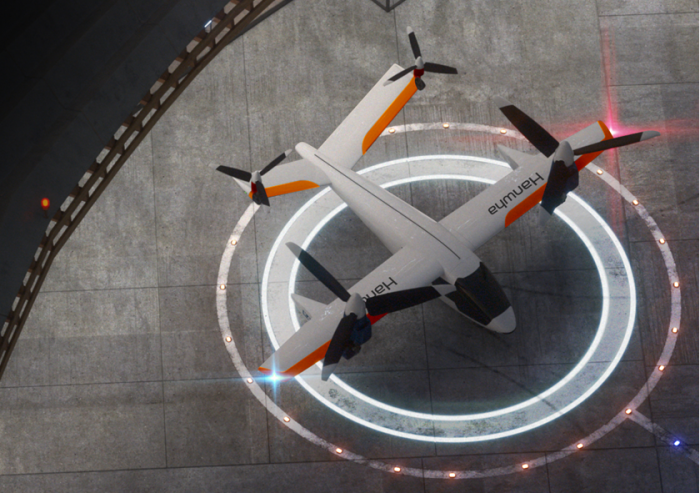U.S. Wolfpack Research “binary production, sales, cooperation, etc. are all false”
Global market dominant share price soaring, concerns over’second Louising Coffee’
Hanwha Systems, the first in Korea to enter UAM, targets commercialization in 2025
Business expansion possible, including ground infrastructure construction and operation service

 Photo = Provided by Hanwha Systems
Photo = Provided by Hanwha SystemsAmid the controversy over fraud by Chinese drone company EHang, the market’s interest in Hanwha Systems is increasing. It is expected that Hanwha Systems, the first in Korea to enter the urban air traffic (UAM) market, will become a leading company.
According to industry sources on the 18th, Wolfpack Research, an American short-selling investment company, released a negative report on binomial listed on NASDAQ on the 16th. False sales and technology manipulation are key.
Wolfpack Research revealed that “Hang Lee lied about production and manufacturing, sales, business cooperation, and regulatory permits.” He argued that the sales transaction with’Shanghai Kunxiang’, Lee Hang’s main customer, was false, and expressed doubts about the production capacity, saying that it did not have advanced manufacturing facilities.
Regarding this, Lee Hang refuted, saying, “The report of Wolfpack Research contains numerous errors, unfounded arguments, and misunderstandings,” and “we will review measures to protect the interests of investors.”
However, it is difficult to restore the stock price once it has fallen. The stock price, which soared to $124.09 on the 12th before the report was released, plunged 63% to $46.30 on the 16th. On the 17th, when Lee Hang released an explanation, the market ended at $77.73, the level at the end of January.
Lee Hang’s share price started to soar as the outlook for the UAM market, represented by flying cars in the global market, diverged high. The market leadership was also held by Lee Hang, who successfully commercialized the electric vertical take-off and landing aircraft (eVTOL).
It is difficult to conclude the controversy of fraud, which has become a true battle. However, some are concerned that the fiscal corruption case, which was called the’Chinese version of Starbucks’, could reappear, which was delisted by NASDAQ. There is a big opinion that it is not Kiwoo, as Lewising Coffee was also removed as a report by Wolfpack Research.
As the situation is like this, the attention to Hanwha Systems, which is nurturing UAM as a future growth engine, is increasing.
Hanwha Systems announced its entry into the air taxi market for the first time in Korea in July 2019. It is participating in the development of’Butterfly’ by investing about 30 billion won in Overair, a leading U.S. personal vehicle (PAV) development company. Hanwha Systems also dispatched specialized research and development (R&D) personnel.
It also created a dedicated department by recruiting aviation expert Kim Seok-gyun from Rolls-Royce, a British aircraft engine manufacturer.
Hanwha Systems introduced a mock-up of a butterfly in November last year. The butterfly, powered by 100% electricity, is an eVTOL equipped with four tilt rotors (rotator capable of high-speed forward flight). Continuous operation is possible through fast charging, and the maximum speed reaches 320 km/h. Butterfly aims to produce prototypes in 2022 and commercialize them in 2025.
The reason for the bright outlook for Hanwha Systems’ UAM business is that it is possible to expand not only aircraft development, but also to ground infrastructure and operation services. Hanwha Systems is also in charge of ICT solutions in the navigation and control sector.
From 2026, the UAM pilot service will be promoted to the general public, and from 2029, the service area will be gradually expanded.
US investment bank Morgan Stanley predicts that the global UAM market will grow to $1.5 trillion by 2040. Just looking at examples of Hyundai Motor Group co-creating a Flying Car Investment Fund with Korea Development Bank, the fight for preoccupation in the market is fierce.
An industry insider said, “The US, Europe, and Japan have started developing PAVs ahead of Korea, but the gap is not wide because of the high technological barriers. .
Reporter Lee Se-jung sj@
<저작권자 © 온라인 경제미디어 뉴스웨이·무단 전재 및 재배포 금지>
